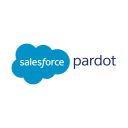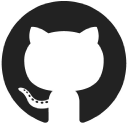How We Transformed an Internal Tool Into a $3.8M/Year SaaS Company
Hello! Who are you and what business did you start?
Hello, I’m Zandra Moore, CEO and co-founder of Panintelligence. More than 500 SaaS companies use our data analytics platform to provide better in-app customer insights to their users, including real-time visual insights, distributed insights like alerts and notifications, and AI-enabled predictive insights to help people understand what is likely to happen to their business, customers or markets in the future.
We are headquartered in the UK and work with SaaS vendors worldwide, primarily in the fintech, retail, education, and healthcare sectors. We opened an office in Boston, Massachusetts, in January 2023, and half of our new customers have come from the US since then.
We have 40 people and ended 2023 on $3.8m with over 400 SaaS customers globally.

The biggest thing I’ve learned in the last few years is being brave enough to be super-niche...
Sorry, you need to login and/or become a member to view the rest of this content. Free Download163 Million Dollar Solopreneur Business Ideas
Free Download163 Million Dollar Solopreneur Business IdeasDownload the report and join our email newsletter packed with business ideas and money-making opportunities, backed by real-life case studies.
Get The Report Free Download163 Million Dollar Solopreneur Business Ideas
Free Download163 Million Dollar Solopreneur Business IdeasDownload the report and join our email newsletter packed with business ideas and money-making opportunities, backed by real-life case studies.
Get The Report Free Download163 Million Dollar Solopreneur Business Ideas
Free Download163 Million Dollar Solopreneur Business IdeasDownload the report and join our email newsletter packed with business ideas and money-making opportunities, backed by real-life case studies.
Get The Report Free Download163 Million Dollar Solopreneur Business Ideas
Free Download163 Million Dollar Solopreneur Business IdeasDownload the report and join our email newsletter packed with business ideas and money-making opportunities, backed by real-life case studies.
Get The Report Free Download163 Million Dollar Solopreneur Business Ideas
Free Download163 Million Dollar Solopreneur Business IdeasDownload the report and join our email newsletter packed with business ideas and money-making opportunities, backed by real-life case studies.
Get The Report Free Download163 Million Dollar Solopreneur Business Ideas
Free Download163 Million Dollar Solopreneur Business IdeasDownload the report and join our email newsletter packed with business ideas and money-making opportunities, backed by real-life case studies.
Get The Report Free Download163 Million Dollar Solopreneur Business Ideas
Free Download163 Million Dollar Solopreneur Business IdeasDownload the report and join our email newsletter packed with business ideas and money-making opportunities, backed by real-life case studies.
Get The Report Free Download163 Million Dollar Solopreneur Business Ideas
Free Download163 Million Dollar Solopreneur Business IdeasDownload the report and join our email newsletter packed with business ideas and money-making opportunities, backed by real-life case studies.
Get The ReportMore Business Ideas Like This







































